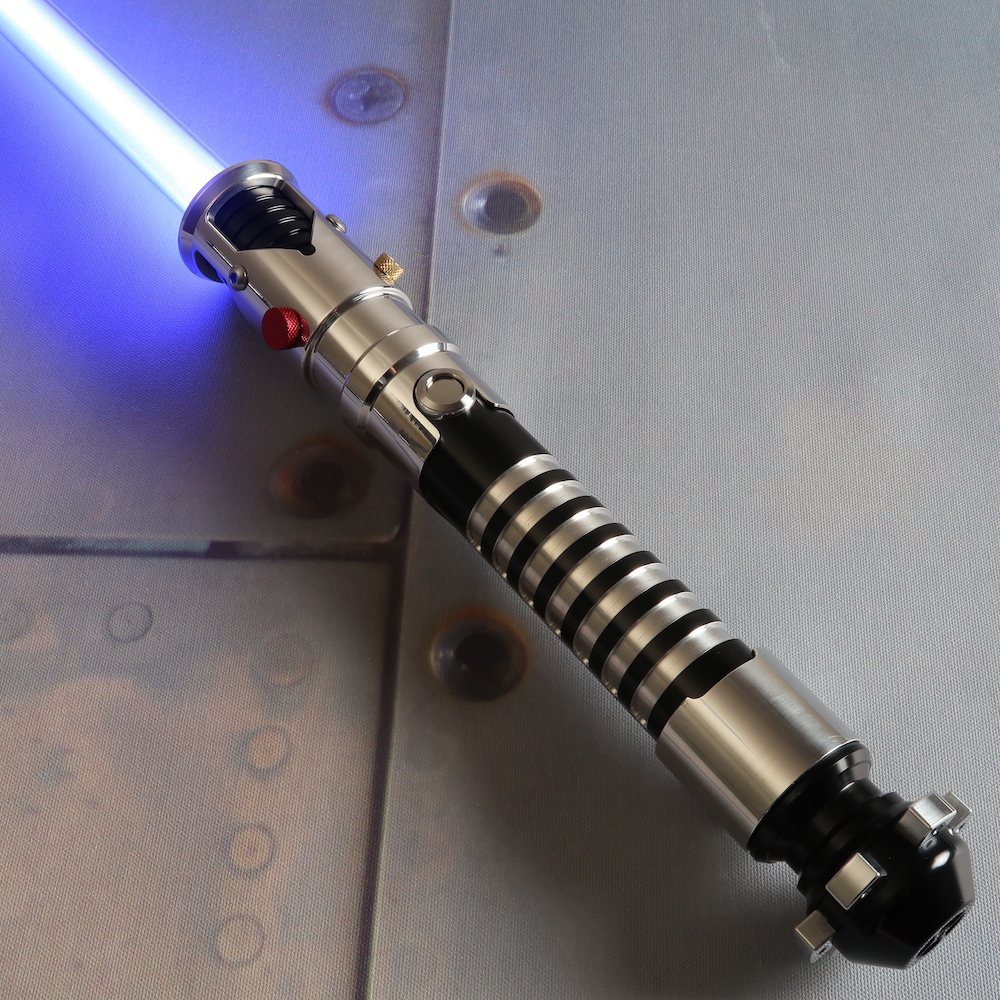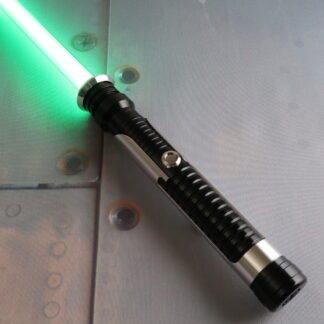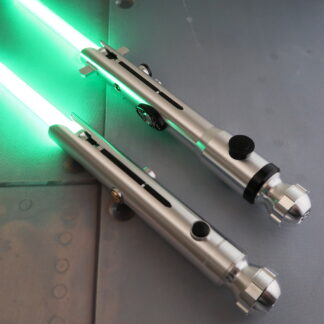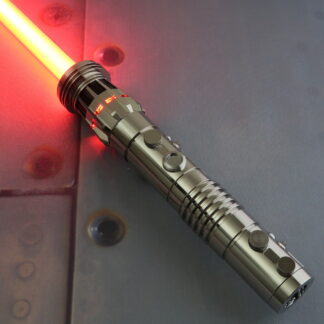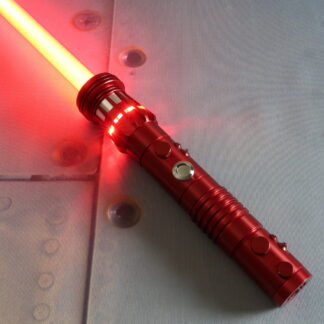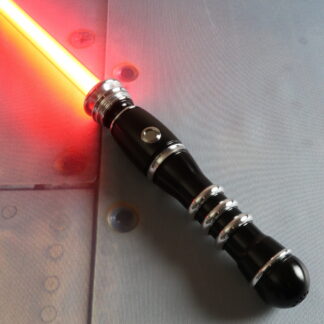A Deeper Look at Lightsaber Combat Form VII: Vapaad/Juyo Combat Style
Form VII (7)—known as Vapaad in its refined state—is one of the most infamous and controversial styles of lightsaber combat in the Star Wars universe. Born from the combination of the raw power of its predecessor, Juyo, and the finesse of a unique, almost dangerous approach to the Force, Vapaad is not a form for the faint of heart. It is considered one of Star Wars’ best lightsaber forms due to the sheer power and impressive athleticism required. Form VII: Juyo/Vapaad demands an extraordinary balance between the mind, body, and spirit, pushing the combatant to their very limits and even beyond.
As the culmination of lightsaber combat evolution, lightsaber combat Form 7 stands apart from earlier styles like Form I: Shii-Cho, Form III: Soresu, and Form V: Shien/Djem So. Where those emphasize balance, defense, or strength, Form VII: Juyo and Vapaad break convention with raw aggression and psychological intensity. In the sections ahead, we’ll explore the history of lightsaber combat, this form’s origins, mechanics, strengths, dangers, and the few legendary Force wielders bold enough to master it.
Master The Vapaad/Juyo Lightsaber Form With a Custom Saber
The Origins of Form VII & How It Works
Form VII: Juyo/Vapaad, also known as the Ferocity Form, centers on relentless pressure, unpredictable strikes, and intense emotional momentum. Unlike the defensive Soresu stance or the counter-based flow of Shien, lightsaber combat form 7/VII, Juyo throws caution aside, demanding total immersion during lightsaber battles.
Every movement in Form VII is aggressive, with erratic angles, sudden bursts of speed, and little room for hesitation. Practitioners channel the Force not to maintain control, but to fuel fury, striking with rapid ferocity until their opponent breaks.
Star Wars’ Vapaad, the refined variant of Form VII, was developed by Jedi Master Mace Windu as a way to harness—not suppress—inner darkness. Rather than resisting emotion, Vapaad embraces it in carefully timed bursts. The form’s stance emphasizes flow, with each strike feeding the next, which forms a loop of energy that pulls aggression from both the wielder and their opponent. Vapaad practitioners walk a razor’s edge, using the Force to channel their opponent’s darkness back at them while keeping their own emotions in check.
The Mechanics of Vapaad
Considered an advanced lightsaber combat tactic, Vapaad’s core concept revolves around manipulating emotion by channeling and weaponizing anger, malice, and further emotions associated with the Dark Side. The practitioner is forced to confront their own darkness, tapping into their inner rage, fear, and aggression—but only in brief bursts. The trick is to use this negative energy as a weapon, directing it outward in focused, controlled strikes without allowing it to consume the user. It’s a dangerous game. If one is not careful, Vapaad can open the door to the darkness they seek to control.
Unlike other forms, Vapaad doesn’t rely on traditional defensive measures. Instead, it thrives on momentum and speed. The practitioner strikes and flows continuously, overwhelming the opponent’s defenses through rapid, unpredictable movements. It’s an art of deception—shifting between deceptive, seemingly erratic strikes and moments of perfect stillness, where the practitioner bides their time, waiting for the perfect opening.
At its heart, Star Wars’ VII Form Vapaad is not just about technical skill; it’s a mental battle. A practitioner must maintain complete self-awareness and discipline over their emotions. It is said that only a Jedi who has mastered their inner darkness can use Lightsaber Form 7/VII with success. Failure to control these emotions leads not only to defeat in combat but potentially to the seduction by the Dark Side itself.
Strengths of Form VII: Vapaad & Juyo
When it comes to form-specific maneuvers in lightsaber combat, Form VII is a relentless offensive force. Practitioners overwhelm opponents with raw intensity, unleashing a continuous stream of strikes that leave little room for reaction. This form thrives on unpredictability, forcing adversaries to adapt in real-time to its erratic angles and ferocious pace.
For those skilled enough to wield it, Vapaad transforms lightsaber combat into a brutal yet graceful dance. The technique demands complete focus, emotional control, and physical discipline. When executed flawlessly, Form VII allows the user to dominate even elite foes with a storm of momentum-driven attacks.
What makes Lightsaber Combat Form 7/VII especially unique is its emotional integration—using controlled bursts of inner darkness to amplify one’s connection to the Force. Unlike more grounded forms like Soresu or Shien and Djem So, Vapaad walks a tightrope between the Light and Dark Sides, unlocking a level of power few other forms can match.
Form VII is not just a lightsaber style, but a philosophy. Its power lies not only in technique, but in a user’s ability to channel chaos into clarity. When mastered, the Vapaad/Juyo Form becomes one of the most devastating and emotionally resonant forms in the Star Wars universe.
The Drawbacks & Dangers of Combat Form VII
While Vapaad is a formidable style for a skilled practitioner, it comes with its own unique weaknesses. First and foremost is the mental toll it takes on the user. The intense emotional control needed to harness Vapaad, especially in the heat of battle, can be exhausting. Practitioners of this form are frequently pushed to their limits, both physically and mentally. The fine line between control and surrender to the Dark Side is always present; even the slightest lapse in focus can lead to becoming consumed by the darkness they sought to control.
Furthermore, this form’s reliance on emotion as fuel for combat makes it particularly taxing in prolonged engagements. Where other forms like Soresu or Form IV: Ataru might give the practitioner more room to breathe, Vapaad demands that its users maintain a constant level of intensity or risk losing their edge. This is why it was rarely taught to Jedi outside the most elite circles—only those known to have the mental fortitude to withstand the strain could be trusted with it.
Additionally, Juyo/Vapaad’s aggressiveness often put it at odds with the Jedi Code itself. While the Jedi philosophy advocates for detachment from emotion and calmness in the face of conflict, Lightsaber Form 7/VII forces its practitioner to embrace these emotions, if only momentarily, creating a moral dilemma that not all Jedi are equipped to handle.
The Legacy of Vapaad: Mace Windu & Other Form VII Masters
The most iconic figure associated with Vapaad is Mace Windu himself. His mastery of the form was so complete that he was almost able to use it to defeat one of the greatest Sith Lords in history—Darth Sidious. Windu’s profound understanding of Vapaad allowed him to stand toe-to-toe with the Sith Lord, even when most other Jedi would have faltered. Had it not been for Anakin Skywalker (Darth Vader)—a powerful duelist known for his aggressive Djem So technique—the Jedi Master may have prevailed. Anakin’s saber form is often cited in discussions about what lightsaber combat style reveals about a warrior’s mindset, making his intervention all the more symbolic in the clash between passion and discipline.
Windu’s strength also stemmed from his ability to channel his emotions, specifically anger and frustration, without letting them control him. This inner balance made Windu the ultimate practitioner of Vapaad. His precise control over the form allowed him to exploit the Dark Side energy projected by Sidious without falling to it himself. Mace Windu’s lightsaber form is as much about discipline and control as it is about intensity and precision.
Other Jedi and Sith have brushed against Form VII in different ways. The original Juyo form was favored by Dark Side warriors like Darth Maul, who used it with brutal efficiency. In contrast, Jedi like Qui-Gon Jinn rejected the form’s volatile nature. Qui-Gon Jinn’s form of choice, Ataru, emphasized fluid, acrobatic motion and emotional clarity, making it fundamentally incompatible with the intensity of Form VII.
Though few have wielded it successfully, Form VII—whether as Juyo or Vapaad—remains one of the most potent and dangerous disciplines in all of lightsaber combat. Its legacy, shaped by a handful of exceptional Force users, continues to inspire awe and caution throughout Jedi and Sith history.
Custom Lightsabers Inspired by Mace Windu & Others
Learn More or Get Your Saber
Mace Windu’s lightsaber form, VII: Vapaad and Juyo, embody the peak of intensity and control in combat. Are you ready to wield a saber worthy of that legacy? Explore our collection of lightsaber colors, character-inspired lightsabers, and custom saber accessories to create a weapon that matches your personal fighting style. For tips, builds, and combat form discussions, join the Ultrasabers community on SaberForum.com. Questions? Contact us anytime for help choosing the perfect saber.



